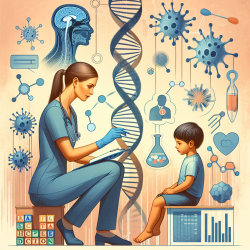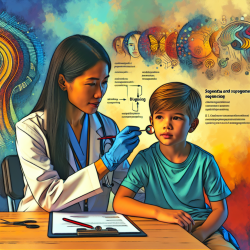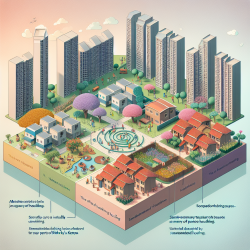Introduction
As a speech-language pathologist deeply committed to improving child therapy outcomes, it's crucial to leverage the latest research and technologies. The study titled "A Gene Regulatory Network for Cellular Reprogramming in Plant Regeneration" offers insights that can be adapted to enhance our therapeutic strategies. While the research primarily focuses on plant biology, the underlying principles of gene regulatory networks (GRNs) and cellular reprogramming can be translated into our field to optimize therapy for children.
Understanding Gene Regulatory Networks
Gene Regulatory Networks (GRNs) are complex networks of interactions between transcription factors and genes that control various biological processes. In the context of plant regeneration, GRNs are crucial for understanding how plants respond to wounding and regenerate tissues. The study identifies key transcription factors and promoters that play pivotal roles in this process, highlighting the intricate web of regulatory interactions.
Implications for Child Therapy
While the study focuses on plants, the concept of GRNs can be applied to child therapy by understanding the complex interactions that govern language and cognitive development. By mapping out the 'regulatory networks' in a child's learning process, therapists can identify critical nodes or interventions that could significantly enhance therapy outcomes.
Data-Driven Decision Making
Data-driven decision-making is at the heart of effective therapy. By utilizing insights from GRNs, therapists can develop personalized intervention plans that are tailored to the unique regulatory networks of each child. This approach ensures that interventions are not only evidence-based but also highly targeted, leading to more efficient and effective therapy sessions.
Encouraging Further Research
The study on plant regeneration underscores the importance of continuous research and exploration. As practitioners, we should be inspired to delve deeper into the regulatory networks that influence child development. By fostering a culture of research and innovation, we can uncover new therapeutic techniques and strategies that can transform child therapy.
Conclusion
The insights from the study "A Gene Regulatory Network for Cellular Reprogramming in Plant Regeneration" provide a valuable framework for enhancing child therapy outcomes. By adopting a data-driven approach and understanding the regulatory networks at play, therapists can create more effective and personalized interventions. To read the original research paper, please follow this link: A Gene Regulatory Network for Cellular Reprogramming in Plant Regeneration.










